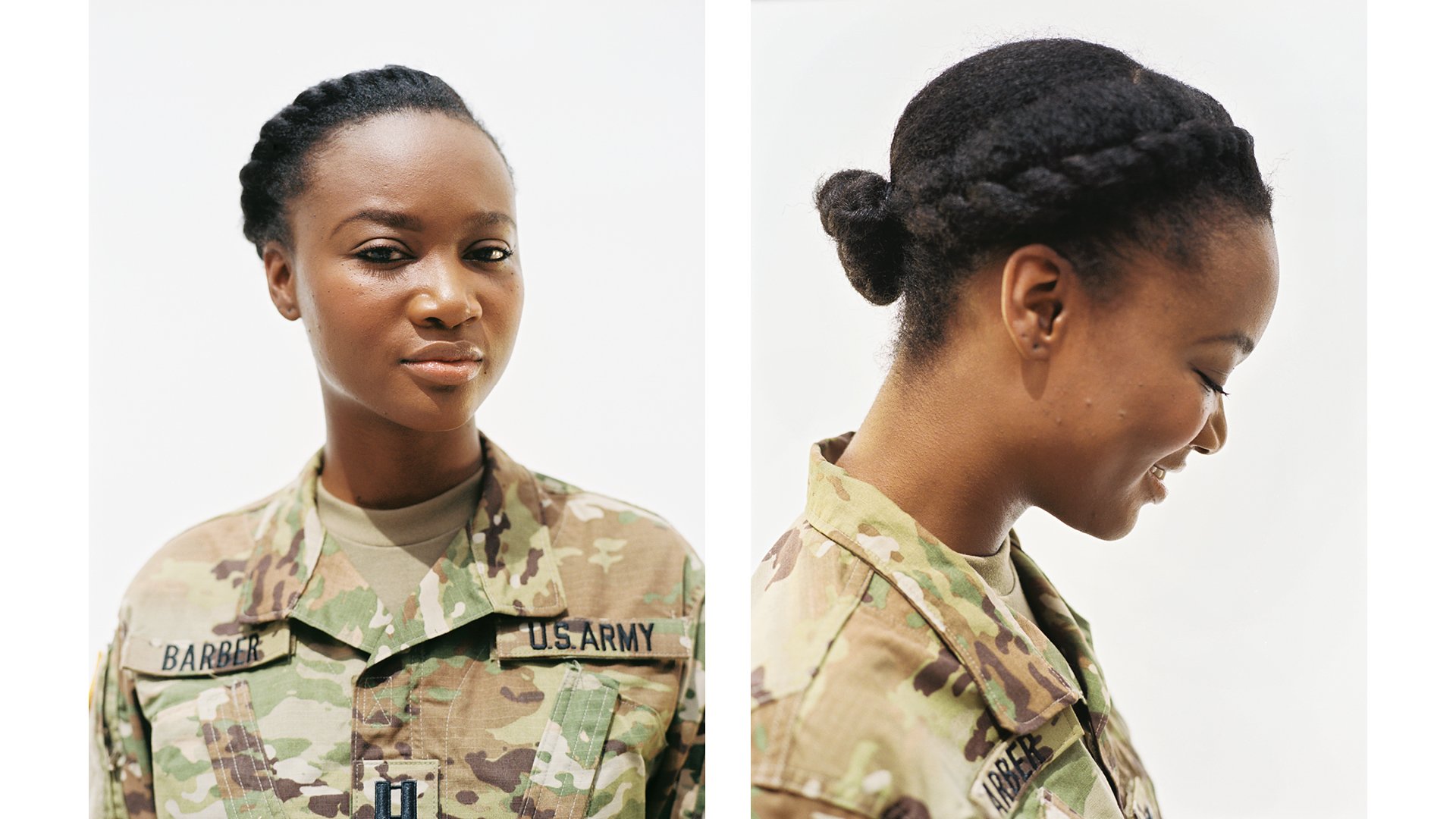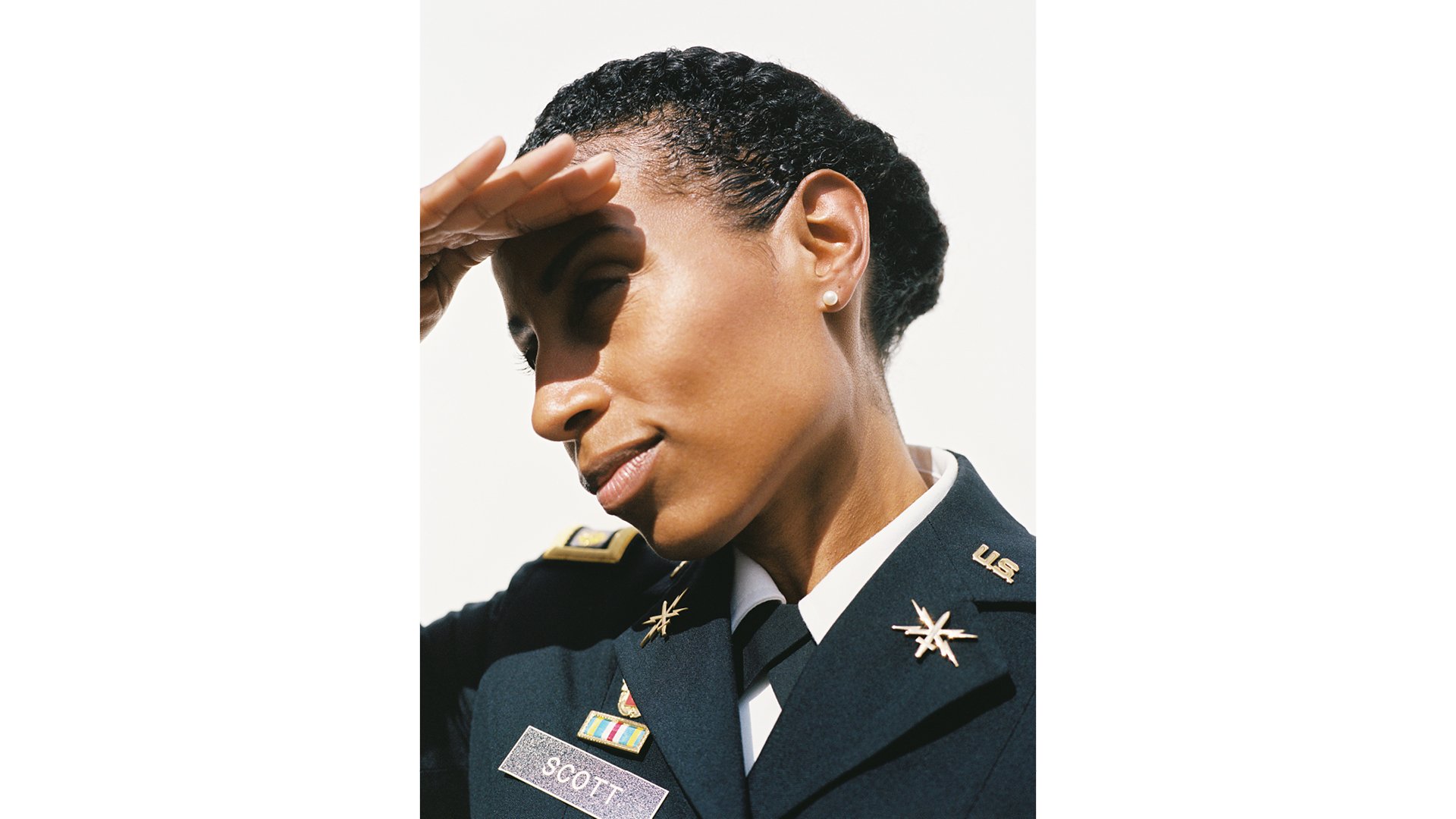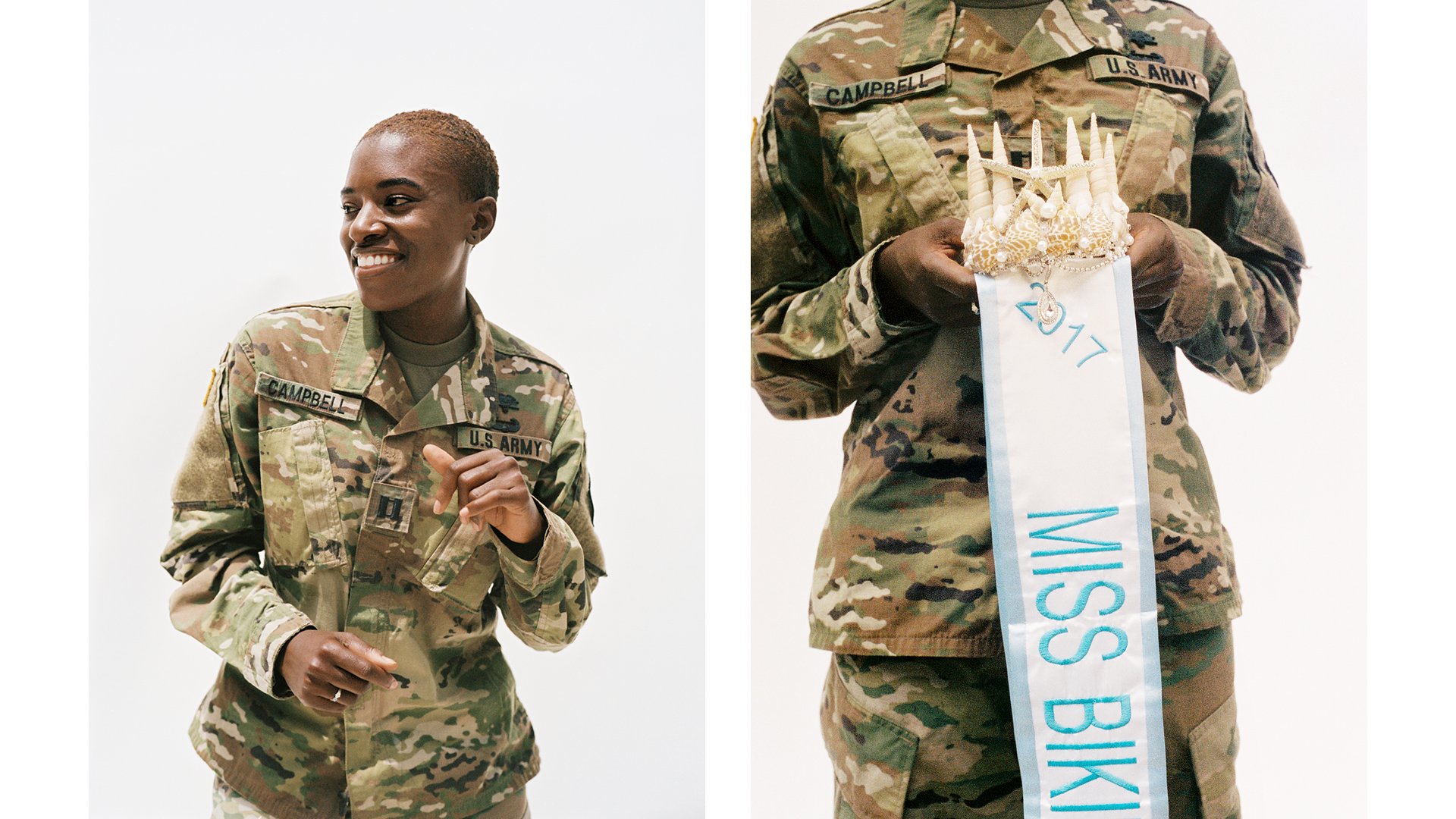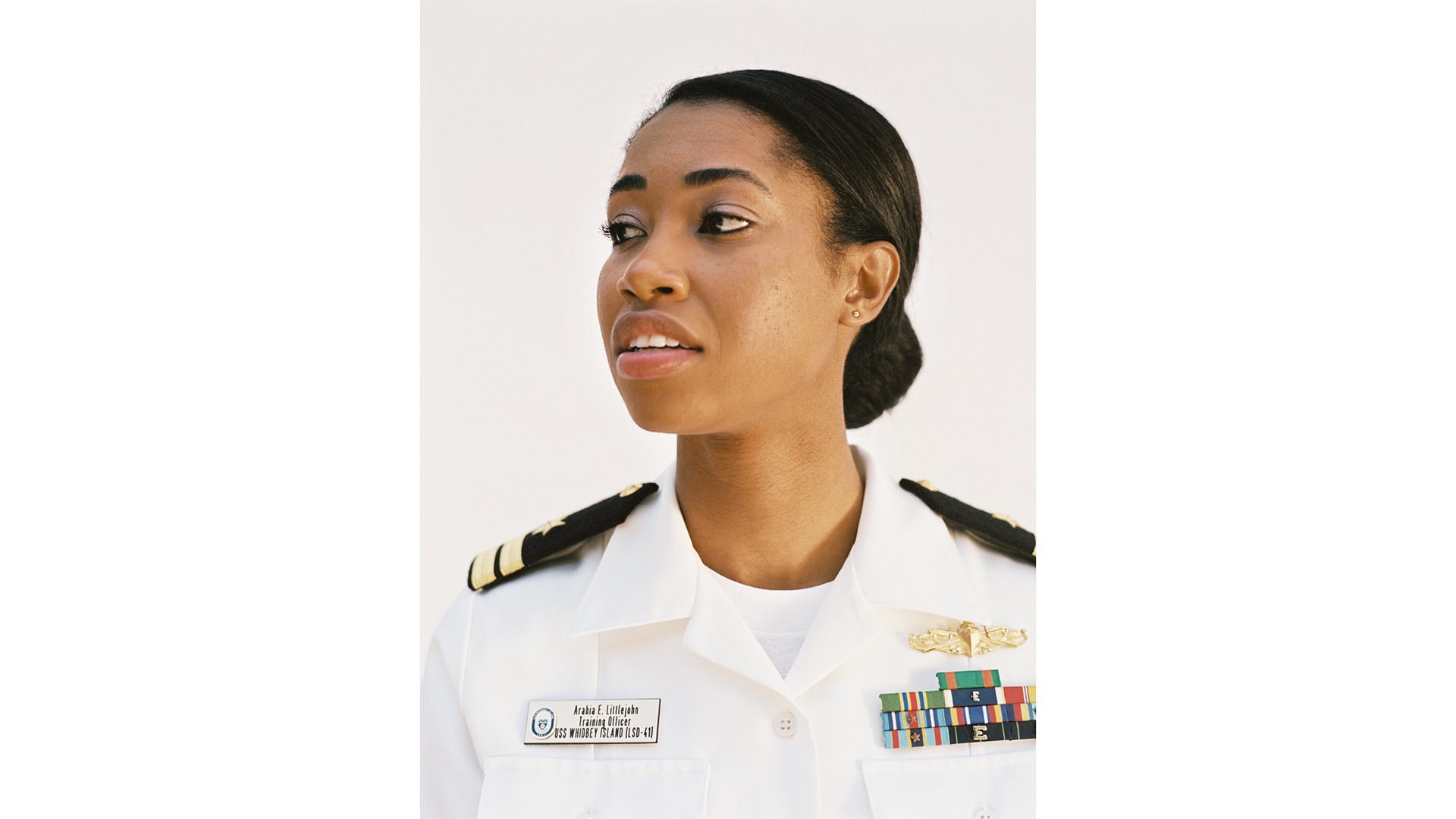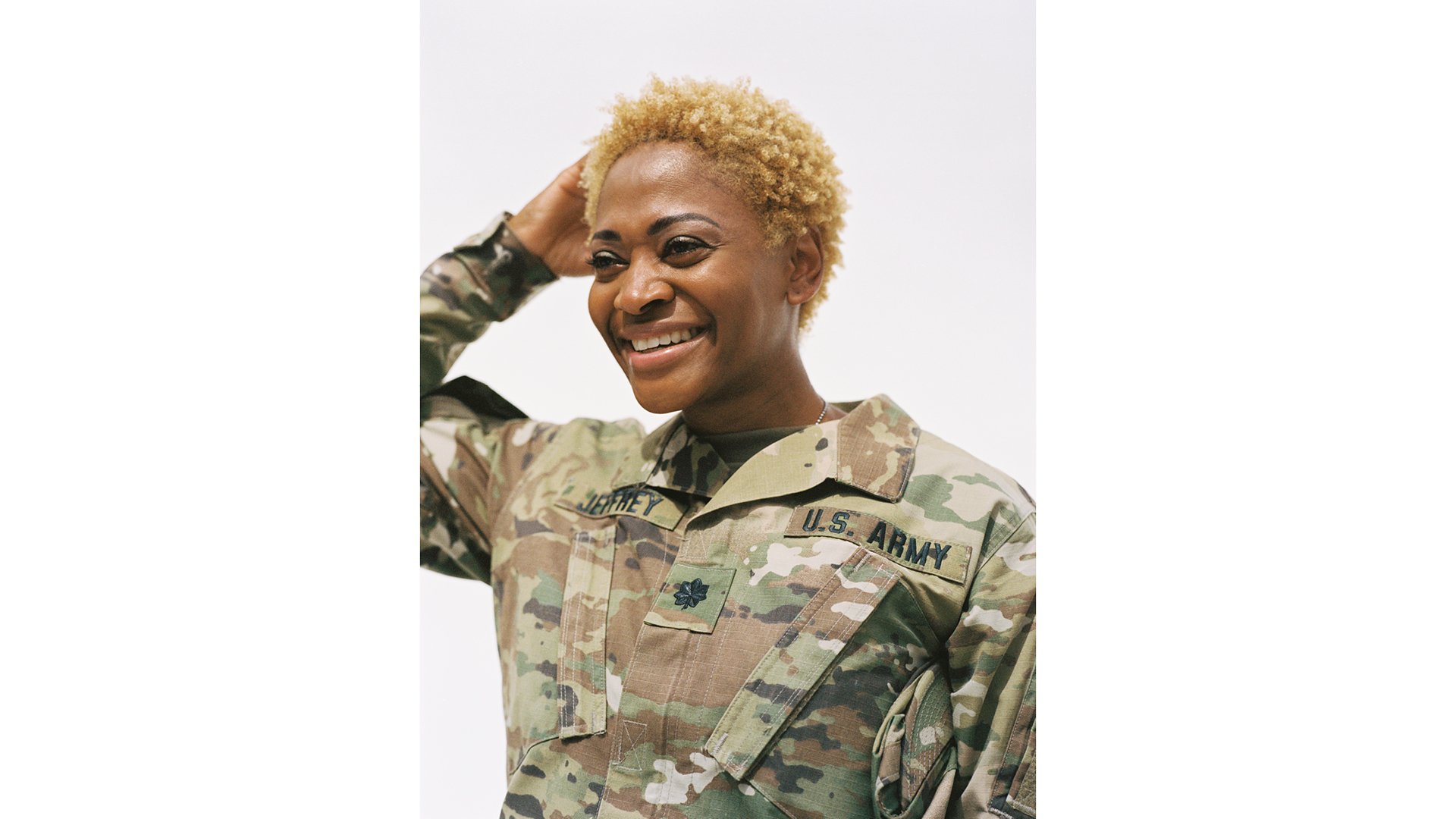In March of 2014, the United States Army issued new hair regulations that were quickly summed up as “racially bias,” due to the ban on “twists, dreadlocks, afros and braids” — styles unique to natural African American women — while deployed. In August of that same year, the military revised those regulations to include a larger array of styles, but it was only in December of 2015 that two-strand twists were approved and just this past February the military gave locs — of a certain length and diameter — the go ahead.
It goes without saying that there’s a limit to Black women being all that they can be when it comes to their hair while serving in the army, but according to Vogue, “more servicewomen than ever are seizing the opportunity to experiment with regulation-approved options for natural hair.”
This month, the magazine profiled 17 of them — “trailblazers” whom they say are “reimagining what it means to be in uniform.” Here are a few of their stories.
Captain Deshauna Barber, U.S. Army
“Barber is regularly swarmed by servicewomen asking for autographs and pictures the moment she steps foot onto a base. A former full-time IT analyst with the Department of Commerce, she’s the only Miss USA to have been crowned while in the Army Reserve. Barber made history for a second time in May when she took the stage for her final walk as Miss USA with her natural curls. ‘There are so many women in pageants who won’t wear their natural hair for fear of not winning,’ she says. ‘This got people talking.’ Barber now works as a motivational speaker and is encouraged to see that the dialogue has opened up in the military, too. ‘Hair is a complicated thing for women of color,’ says Barber, who still remembers struggling with the discomfort of wearing wigs under her helmet. ‘The new regulations show they did the research; there’s an understanding and appreciation of just how diverse our backgrounds are.'”
Major Tennille Woods Scott, U.S. Army
“Woods Scott has adapted her beauty regime under some pretty adverse conditions during her 12 years of military service. ‘In Iraq, I would relax my own hair every eight weeks, which was quite dangerous,’ says Woods Scott, who served in the region in 2007 and 2008. ‘In the hour or so that it took, I was nervous, thinking, What if a rocket or mortar comes in?’ When she eventually decided to ditch her chemical straightening kits, she inspired members of her family to do the same, including her younger sister, who was recently commissioned to the Army. Her mother, also a veteran, passed away 14 years ago, before the current natural hair movement began gathering speed, though Woods Scott believes she would have been encouraged by the recent changes in regulations. ‘It’s refreshing to see women up and down the ranks embracing their natural hair,” she says. “I think my mom would be pleasantly surprised.'”
Captain Faren Campbell, U.S. Army
“Campbell arrived to the set of Vogue’s photo shoot in full military garb. And yet fewer than 24 hours earlier, the Medical Corps company commander was wearing a uniform of a notably different kind—a swimsuit and sash bearing the words Miss Bikini U.S., a title she won at the pageant’s awards ceremony in Miami. Tall with long, lean limbs; a broad smile; and dark, wide-set eyes, Campbell has all the winning features you’d expect from a first-time beauty queen, though her cropped golden brown hair certainly makes for a cool and unconventional crown. ‘When you first cut off your hair, it’s like, Oh, man, I’m stuck!’ says Campbell, who wears her natural hair at a fourth of an inch from her head, the shortest possible length for women in the Army. ‘But then you embrace it, because there’s nothing to hide behind anymore. I’d say the shorter my hair is, the happier I am.'”
Lieutenant Junior Grade Arabia Littlejohn, U.S. Navy
“Littlejohn had natural hair that fell past the shoulder-length limit for candidates when she enrolled at the Naval Academy in Maryland. She used a traditional African hair technique to avoid cutting her curls and had her hair braided into a circular beehive-like crown that stood within the three-inch regulation above her head. ‘Considering how long it takes for black hair to grow, I was willing to do whatever it took to save my locks,’ says Littlejohn, who regularly alternates between straight-ironed hair and natural braids these days. Such resourcefulness has put her in good stead for naval life: She often finds herself in far-flung destinations—Morocco, Spain, Colombia, Greece, and Israel are among the countries to which she’s been deployed—as one of the only female officers aboard a ship of hundreds of servicemen. ‘I know that as a woman of color, I have to lead from the front and be a model for other black junior officers,’ she says. ‘It’s a responsibility that’s on my shoulders, but I’m grateful for it.’
Lieutenant Colonel Junel Jeffrey, U.S. Army
“Jeffrey is the kind of risk-taking, chameleonic beauty who’ll turn a disastrous hair misadventure into an opportunity for total and complete reinvention. The public affairs officer had no qualms about cutting off her long, chemically straightened hair after an abrasive relaxer treatment at a salon on her Army base in Germany caused extensive thinning. She now experiments with new, head-turning styles even under the most challenging circumstances, tracking down a natural hair whiz in Afghanistan to twist her curls. And when a $5 haircut at a barbershop in the Congo left her with what she describes as an Afro ‘shaped like a microphone,’ she laughed off the jokes made by her comrades, cropping her hair close and bleaching it peroxide blonde. ‘The recent change in regulations has given me more options,’ she says. ‘It also says a lot about how the Army feels about inclusion. I feel like now it’s okay to be me.'”

